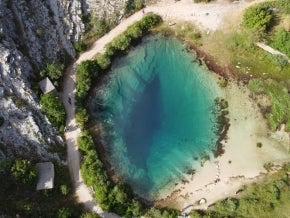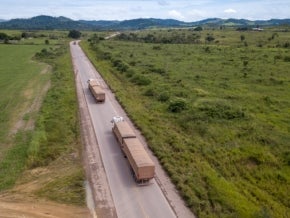Image

We have two months to start healing the world
Back-to-back summits on climate change and biodiversity will offer the world a unique chance to come together on two of the most critical issues of our time - climate and biodiversity. Change is possible. But given the size of the crises, we must use the coming two months to be brutally honest…
Image

Climate solutions can contribute to tackling poverty
For developing countries throughout the world, efforts to tackle climate change can create opportunities to improve the well-being of people living in extreme poverty. A report just launched by Drawdown Lift, a program of Project Drawdown, provides a synthesis of such win-win opportunities. The…
Image

A new lifeline for wildlife conservation finance
What do capital markets have to do with biodiversity? Until now, very little. This changed this week with the launch of a landmark Wildlife Conservation Bond or “rhino bond” that offers a payout linked to the protection of black rhinos, a critically endangered species whose health is essential to…
Image

Water underground: why protecting what’s hidden matters to our health and for the planet
As much as 97 percent of the world’s water is underground – this “groundwater” originates from rain, melting ice, and snow which has soaked into the soil and is stored in the pores and cracks between sand, rocks, and soil particles. Hidden under our feet, this source of water is unfortunately often…
Image

Supporting transparency to drive ambitious climate action
Over the past five years, the Capacity-building Initiative for Transparency (CBIT) has helped more than 80 countries improve their ability to monitor and share their progress toward international climate goals. The improved reporting and transparency resulting from CBIT support has had a truly game…
Image

How our economy could become more 'nature-positive'
A new World Economic Forum white paper sets out how our economies stand to gain from nature-positive policies.
Implementing nature-positive policies could generate an estimated $10 trillion in new annual business value and create 395 million jobs by 2030.
The regulatory and business environment…
Image

Building with nature for a better climate
Nature finally got its rightful place within climate negotiations at COP26 in November. It was the first time – despite the well-established links between the climate and biodiversity crises – that we saw so much emphasis at an international summit on the positive role that nature can play in…
Image

Lessons from a perfect storm in the Amazon wilderness
The agreement by 110 countries at COP26 in Glasgow to halt and reverse deforestation within the decade is very good news. But what will it take for change to actually happen?
This is not the first time world leaders have made such a commitment – the successes and failures in the fight to save one…
Image

Integrated programming in the Global Environment Facility: Learning from the GEF-6 IAP programs
Integrated programming was a key component of the GEF-6 replenishment cycle and a priority for implementation of the GEF 2020 strategy. The focus was on supporting recipient countries to tackle major drivers of environmental degradation in a holistic manner, while ensuring that progress in any…
Image

How the GEF's blended finance is helping environmental innovators
The Global Environment Facility has opened its fifth call for proposals eligible for blended finance support, reflecting the continued growth of its targeted support for innovative and entrepreneurial projects that can yield global environmental benefits.
Interested parties are invited to consult…